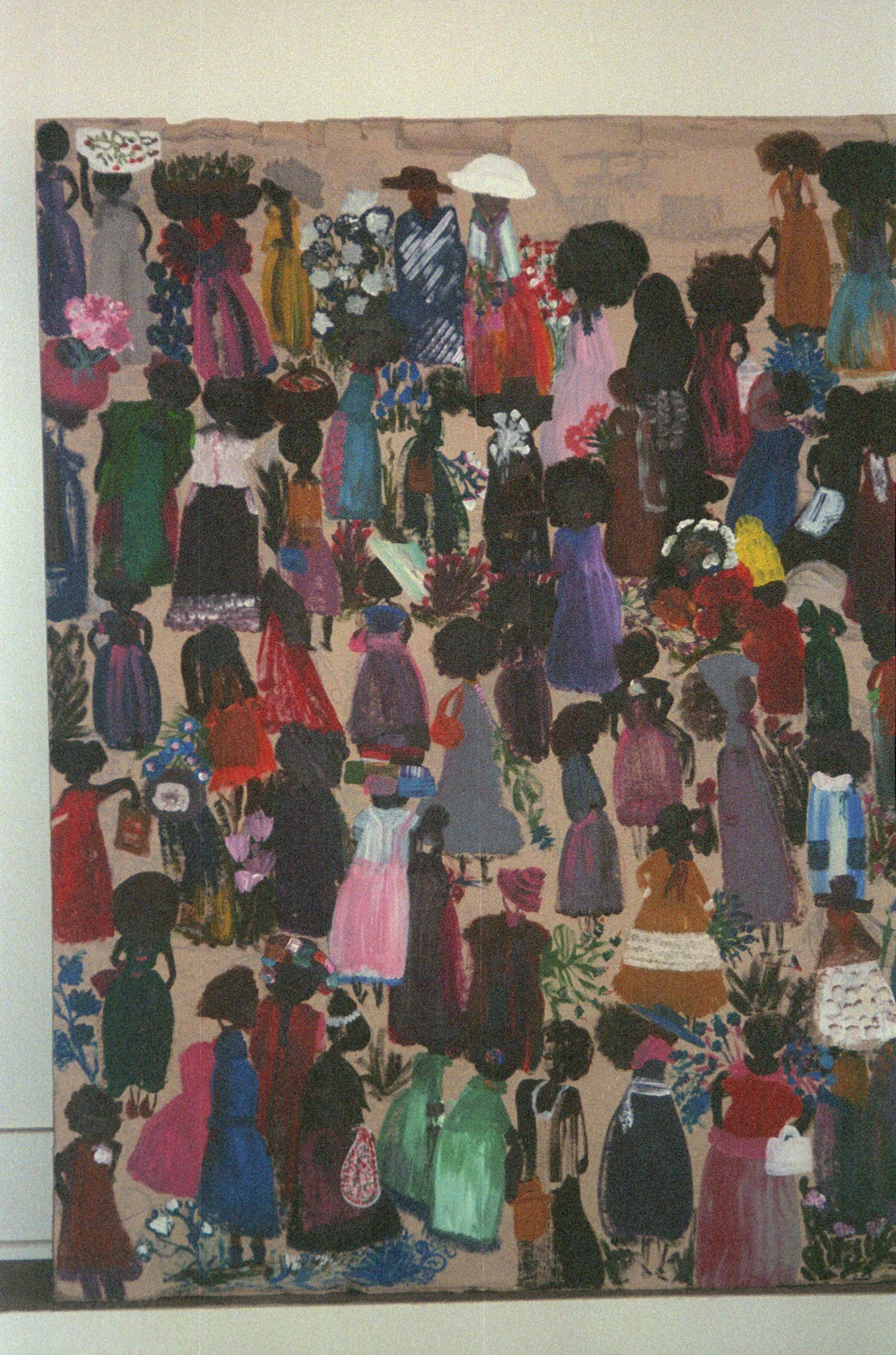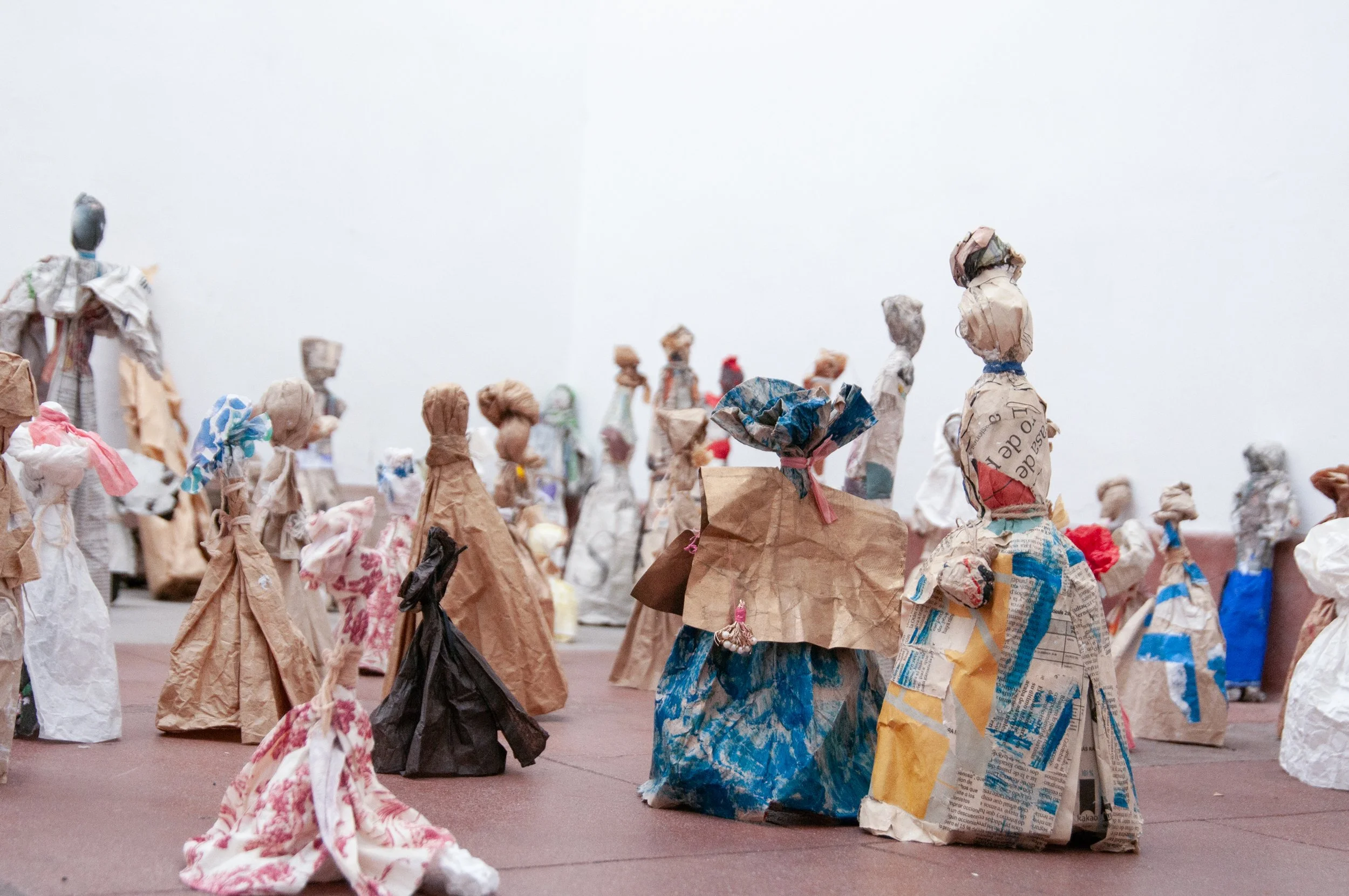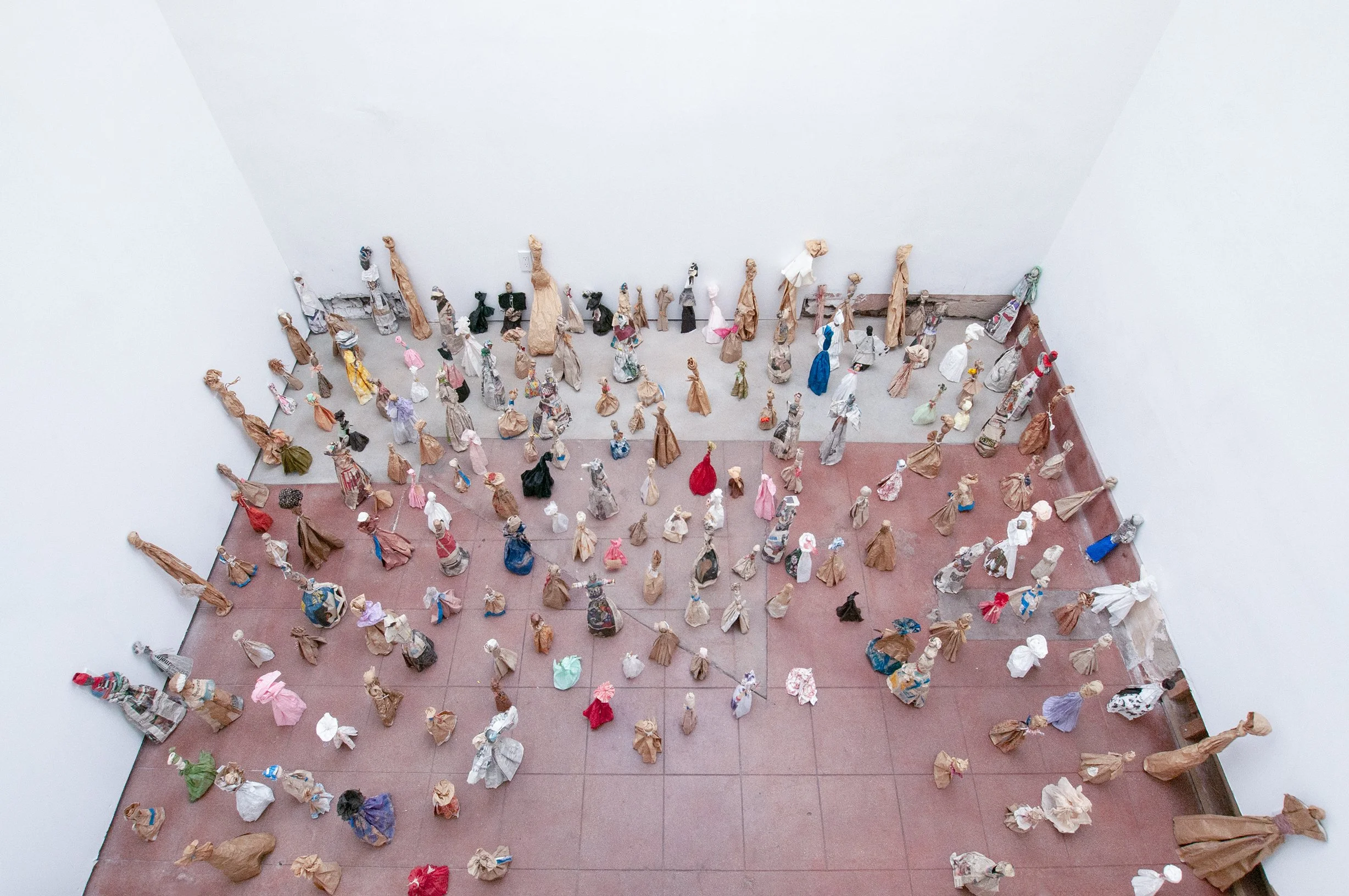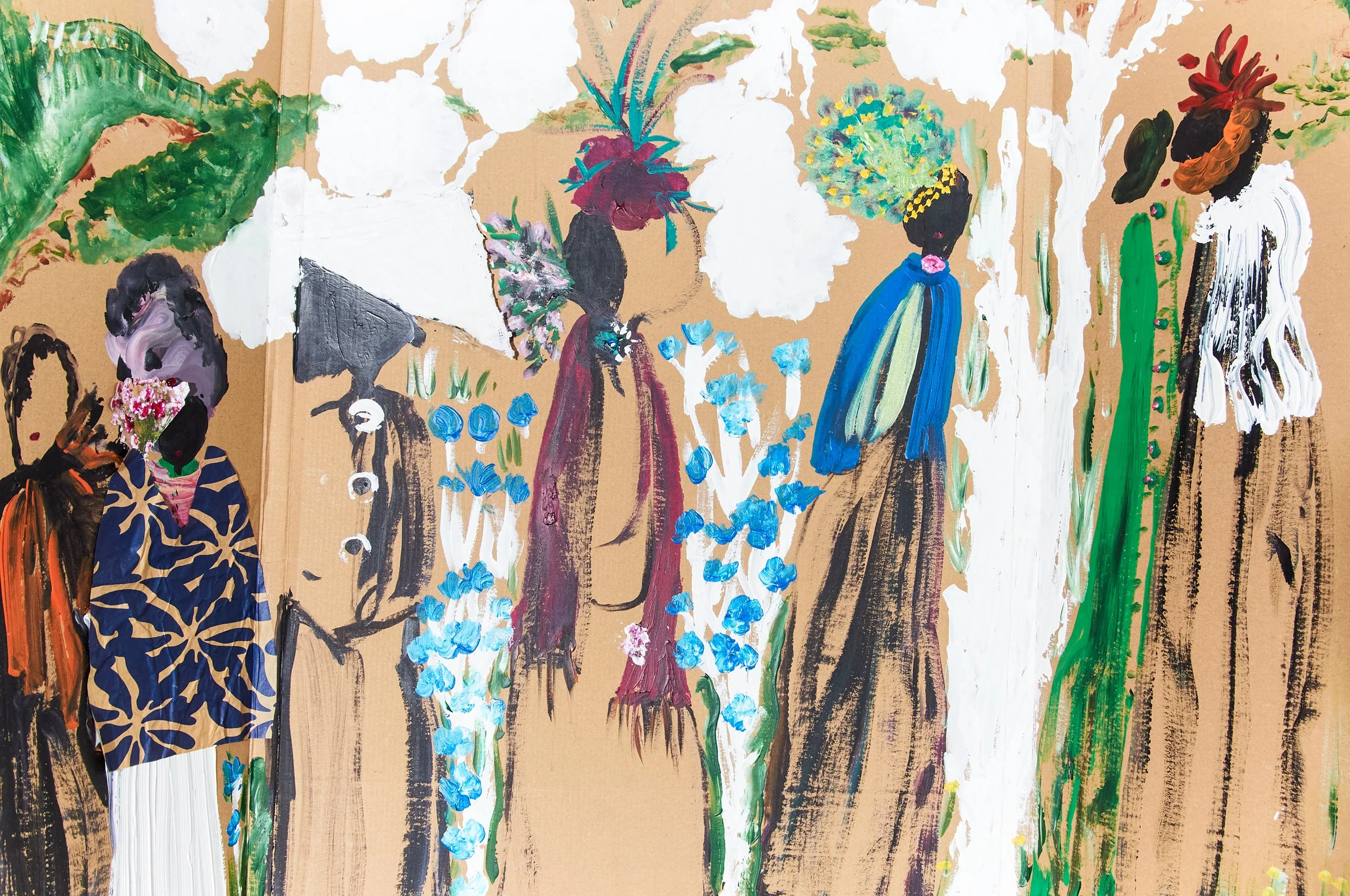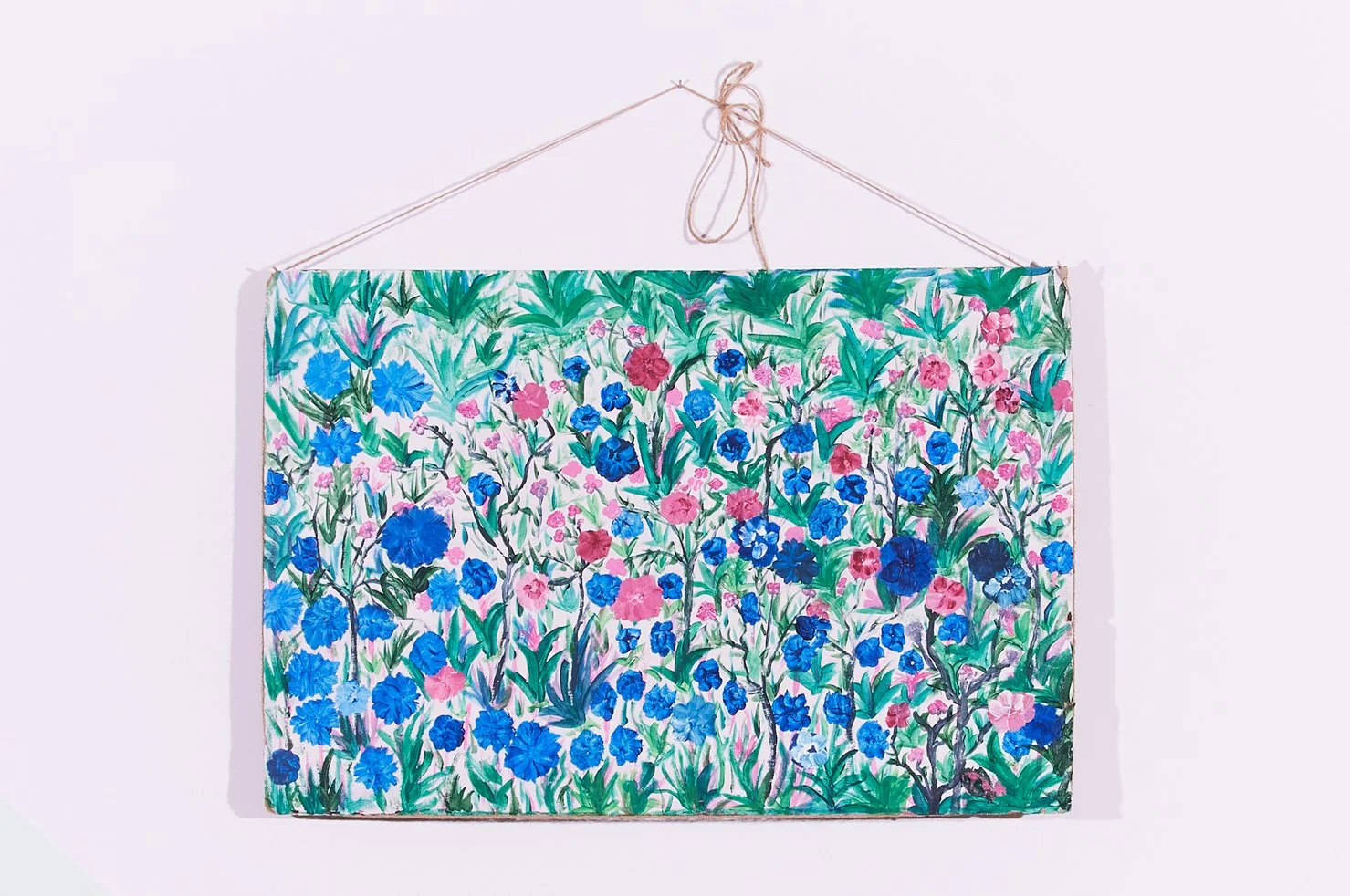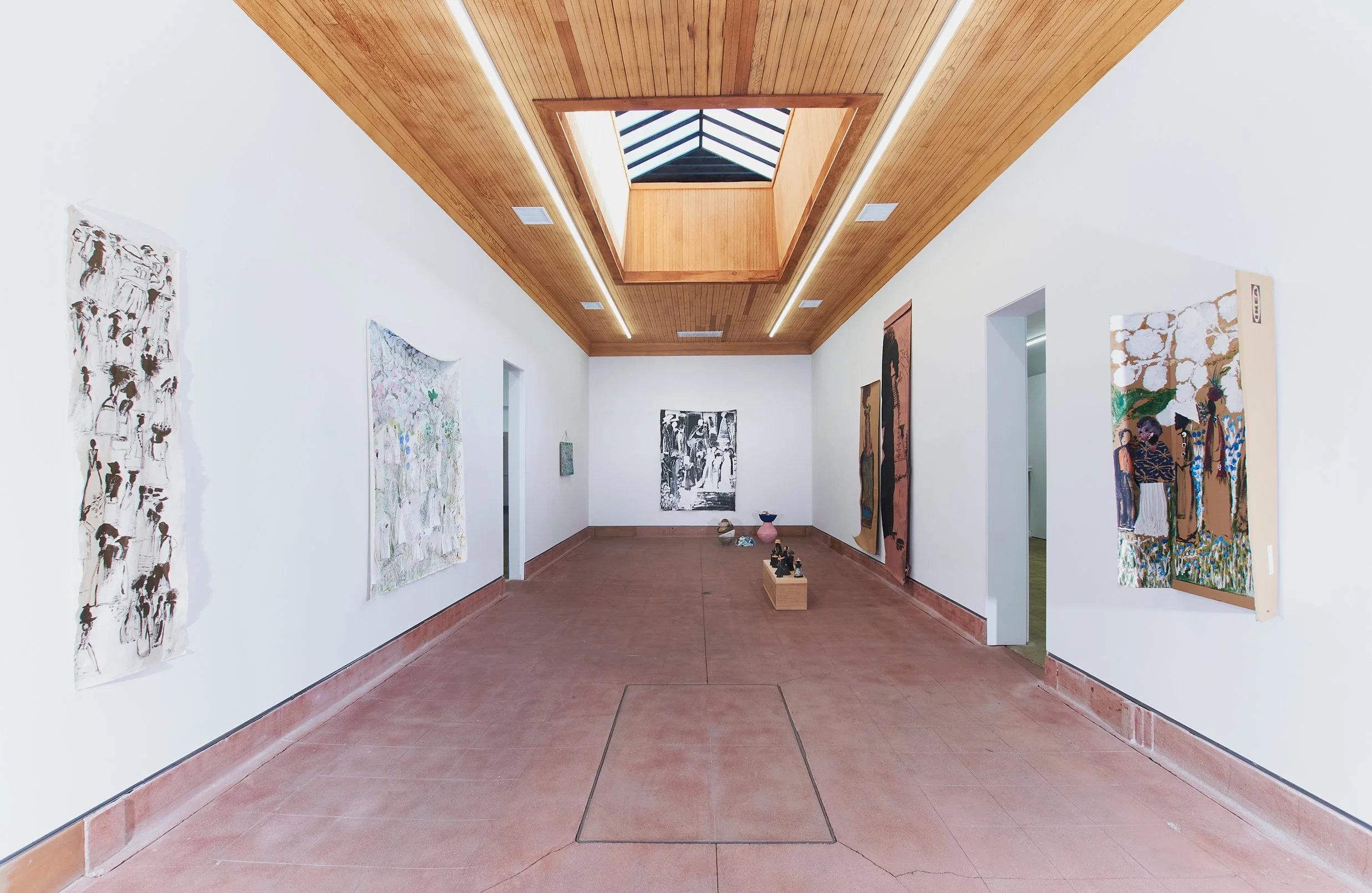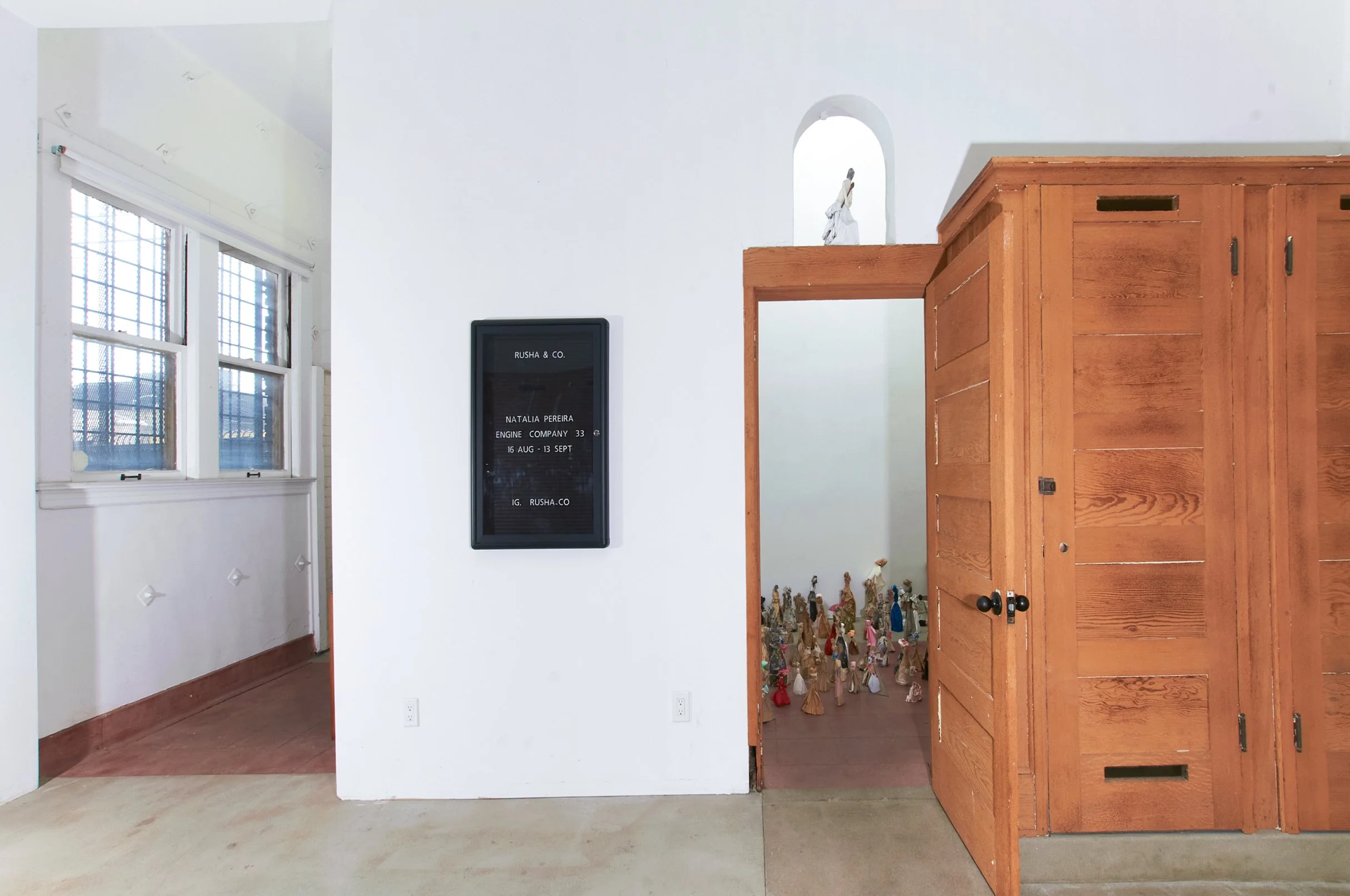
September 2025
Natalia Pereira
Photograph by James Holmes
Artist and Chef Natalia Pereira on survival, memory, and the transformative power of paper and food.
I first met Natalia Pereira a few years ago when my long-time collaborator, Saul Appelbaum, invited me to meet him for lunch at Woodspoon, Pereira’s Michelin-Bib Gourmand Brazilian restaurant in Downtown Los Angeles. The warmth of the place—and of Pereira herself—made a lasting impression.
I reconnected with Pereira to collaborate on her current exhibit at Rusha & Co. and this interview, meeting at ilcaffé, a neighborhood creative hub just across the street from her studio. Stylishly dressed, she arrived carrying a box of fresh produce, ingredients for a private dinner she was hosting that evening. From there, we walked over to her studio to begin our conversation.
—Dan Golden
On Exhibitions and Gatherings
“Ingredients, paper, nature—it’s the same conversation, always.”
Dan Golden: I’ve really enjoyed being involved in your exhibition at Rusha & Co. The way your work is presented in distinct rooms lets visitors fully take in the worlds you’re building. And beyond the gallery walls, you’ve extended that experience into dinners at the space. What inspired you to create those gatherings?
Natalia Pereira: The dinners are a way for me to introduce people to the other side of what I do. Now that I no longer have my restaurant, the dinners are an opportunity for people to experience my artwork and food together. It’s the same conversation, always: ingredients, paper, nature. It’s a perfect coexistence. The art is a very strong subject to introduce the dinner, so it’s a perfect pairing.
Installation view (dinner setting), Natalia Pereira, Engine Company 33, Rusha & Co., Los Angeles, August 16—September 20, 2025. Floral desgn by The Boy Who Cried Flowers and Photograph by Saul Applebaum
Early Life and Memories
“We can all do so much, and with so little.”
DG: Tell me about your childhood.
NP: I had very restricted freedom, moving from one foster home to another. Those experiences gave me new environments and perspectives— I would think, “Oh, this is a house. This is a space.” Even today, I have no family history. I know my last name, but I don’t know my grandparents.
Cooking came from my earliest memories with my adoptive mother, who raised me from three days old until I was seven. Later, I lived with my parents briefly, but by the age of nine, they left, and my siblings and I returned to my foster mother, Francisca. I devoted a book to her. Once I asked her, “Why would you raise me if I were the daughter of your husband and another woman?” She said, “We can all do so much, and with so little. You are one of the biggest things that has happened to me.”
When I came to Los Angeles, I told her, “Mom, I’m going to LA.” She asked, “Where’s LA?” I said, “There”—because in Latin, la means “there.” Everything I imagined, wished for, and dreamed about as a child feels present now, in ways I can hardly describe.
Detail, Natalia Pereira studio. Photograph by James Holmes
Finding Positive in the Negative
“Even for a battery to work, you need the negative.”
DG: People might hear your story and think of it as difficult. Yet you describe it as something that opened you up. How do you see that?
NP: I believe that even for a battery to work, you need the negative. Life gives us both — nature and poison, medicine and harm. I learned that the negative can be transformed into the positive.
I didn’t have a formal education, but I learned four languages from curiosity. I’m obsessed with architecture because it starts with a piece of paper and suddenly becomes solid. Paper is everything to me. Each of us lives fragilely between two pieces of paper: the birth certificate and the death certificate. What we leave behind in between is written, drawn, or built on paper.
Detail, Natalia Pereira studio. Photograph by James Holmes
Detail, Natalia Pereira studio. Photograph by James Holmes
Coming to Art
“Seeds of Seeds was the first thing I ever did.”
DG: When did you begin making art?
NP: I began in 2019. Before that, I used to make tiny drawings on paper at dinner tables. One day, someone noticed and said, “You do that?” I had a whole collection. That led me to writing — I published my first book, Abundância: My Life in Recipes, and I began photographing too.
That same year, I went on a hike in Northern California and found a shiny box under a fern. Inside was a poem, two crystals, and a music box. A woman nearby said, “It might be a gift for you.” Around the same time, painters were working at the chateau and covering everything in paper. When they cleaned up, I gathered all the discarded paper — mountains of it — and saw images forming. From that came my first collection: 86 works called Seeds of Seeds. That was the first thing I ever did.
Detail, Natalia Pereira studio. Photograph by James Holmes
Detail, Natalia Pereira studio. Photograph by James Holmes
Societies of Paper
“Each piece of art is like a person. Together, they form societies.”
DG: You balance so many things—your art practice, your books, and your cooking. How do these parts of your life work together?
NP: It shows up. I can be in the kitchen at three in the morning making bread, or painting, or photographing. It’s all part of the same discipline and respect. I wanted people to feel nourished at my restaurant, and I want my art to feed people in a different way.
Each piece of art is like a person. Together, they form societies—from Italy, Cuba, Zurich, and Los Angeles. They gather, support each other, celebrate, and exist as a collective. They gather, support each other, celebrate, and exist as a collective. For me, they’re not just artworks; they are societies of paper, born of AD105.
Installation view, Natalia Pereira, Engine Company 33, Rusha & Co., Los Angeles, August 16—September 20, 2025. Photograph by Saul Applebaum
Installation view, Natalia Pereira, Engine Company 33, Rusha & Co., Los Angeles, August 16—September 20, 2025. Photograph by Saul Applebaum
AD105 and the Philosophy of Paper
“Paper was given its birth certificate in AD 105.”
DG: You’ve mentioned AD105 a few times. Can you explain what it means in the context of your work?
NP: AD 105 is the year paper was invented in China—its “birth certificate.” Everything we know, every record of human society, is tied to paper. From birth certificates to death certificates, money, recipes, checks, books, and art.
I make my own paper sometimes, from leaves, twigs, cellulose. For me, paper is not just material; it’s society itself. My drawings and sculptures are figures, families, and communities. They are my Society of Paper, AD105.
Installation view (detail), Natalia Pereira, Engine Company 33, Rusha & Co., Los Angeles, August 16—September 20, 2025. Photograph by Saul Applebaum
Influences and Affinities
“Some people say, ‘Your work reminds me of Pierre Bonnard.’ I say, ‘I’d be his lover, for sure!”
DG: Do you feel an affinity with artists from the past?
NP: I’m fascinated by the 18th and 19th centuries—times of great change and controversy, misery and brilliance. We only know those artists and poets because of paper.
I don’t believe in time, I believe in moments. Museums can feel sad to me, because the art is often shown alone, separated from the life of the artist. I want to know what they ate, how they lived. I love Monet because he loved parties and drinks. Some people say my work reminds them of Pierre Bonnard, and I say, “Oh, I’d be his lover, for sure!” I also love Fellini. I went to his museum, saw his work, and bought books I haven’t opened yet—I want to stay like this, to see what comes out of me first.
Installation view (detail), Natalia Pereira, Engine Company 33, Rusha & Co., Los Angeles, August 16—September 20, 2025. Photograph by Saul Applebaum
Installation view, Natalia Pereira, Engine Company 33, Rusha & Co., Los Angeles, August 16—September 20, 2025. Photograph by Saul Applebaum
Survival, Vintage, and Letting Go
“Survival makes creation possible.”
DG: Your art begins with found materials. Does that sensibility extend into other parts of your life, like clothing or style?
NP: Growing up, I was always given leftover clothes, so vintage became part of me. I’ve built a collection dating from the 1830s to the early 1900s. I love walking through thrift shops—you just need to show up, and something will happen.
In 1995, I gathered friends in my town and staged a fashion show with things we found on the streets. I made paper masks for it. At the time, I was surviving, but now I see it as the beginning of my art. If I don’t survive, I can’t do the things. Survival makes creation possible.
And when my first artwork sold, I cried for two weeks. It felt like giving away a part of myself. But I was grateful someone chose to adopt it, to live with it. That respect matters to me.
Installation view, Natalia Pereira, Engine Company 33, Rusha & Co., Los Angeles, August 16—September 20, 2025. Photograph by Saul Applebaum
Closing Reflections
“I’m glad for what I didn’t have, because now the reality is so much more.”
DG: Looking back, how do you see the challenges you faced in shaping the life you’ve built now?
NP: I know the taste of hunger. That’s why I wanted every meal to feed people fully, and why I want my art to nourish people differently. My curiosity, my discipline, my desire to learn — they all come from not having a formal education.
I’m glad for what I didn’t have, because now the reality is so much more. More profound, more meaningful. It’s an unfinished education, and I find that to be perfect.
C.
Installation view, Natalia Pereira, Engine Company 33, Rusha & Co., Los Angeles, August 16—September 20, 2025. Photograph by Saul Applebaum
Natalia Pereira
Engine Company 33
Rusha & Co.
Los Angeles
August 16—September 20, 2025
Natalia Pereira, also known as AD105, originally from the town of Vianopolis in the Minas Gerais region of Brazil, is an acclaimed, multifaceted artist, author & chef.
Pereira’s childhood, and the unimaginable tapestry of stories that it contains, is the driving force behind her creations, many of which are forged from elements of nature – yucca repurposed as both a binding glue and a drawing tool, dried flowers & seeds as integral parts of sculptures, and colors extracted from beets and tumeric.
Pereira and her work have been featured in exhibitions at the Museum of Contemporary Art (MOCA – Geffen Contemporary) in Los Angeles. Pereira has held solo exhibitions in Los Angeles, Italy, Zurich and beyond. Pereira’s exhibitions draw guests from throughout the United States, Europe, Asia and South America, transporting audiences to the deep world of her childhood memories.
Pereira’s book – entitled “Abundancia: My Life in Recipes” was published in 2021, and includes her recipes, stories, poetry, photography and sculptural work.
As the head chef of her restaurant, Woodspoon, in downtown Los Angeles, Pereira has garnered international recognition, with accolades including a “Bib Gourmand” from the Michelin Guide as well as a 2022 finalist honor for the James Beard Foundation Award “Best Chef in California”.
Pereira lives and works in Los Angeles.





